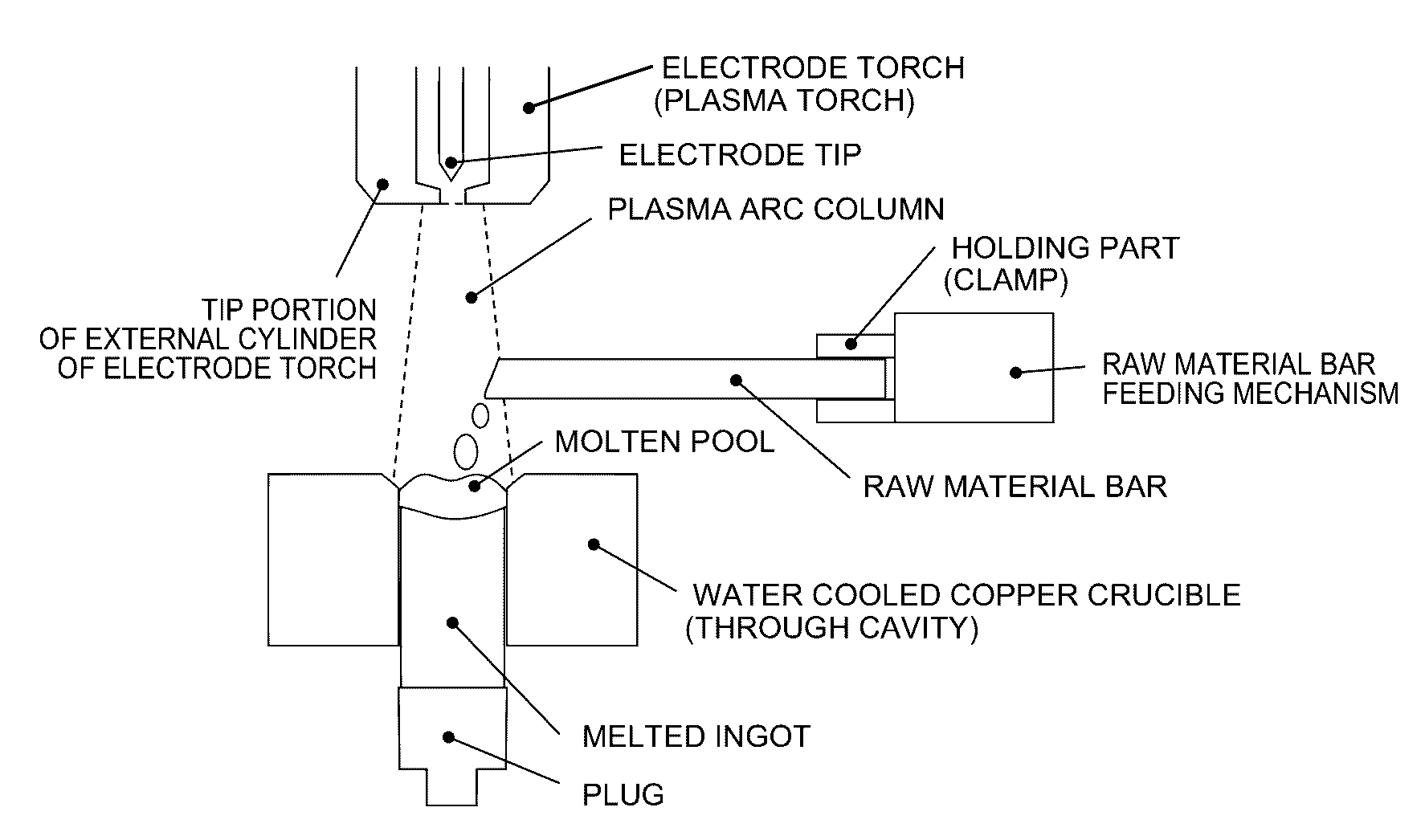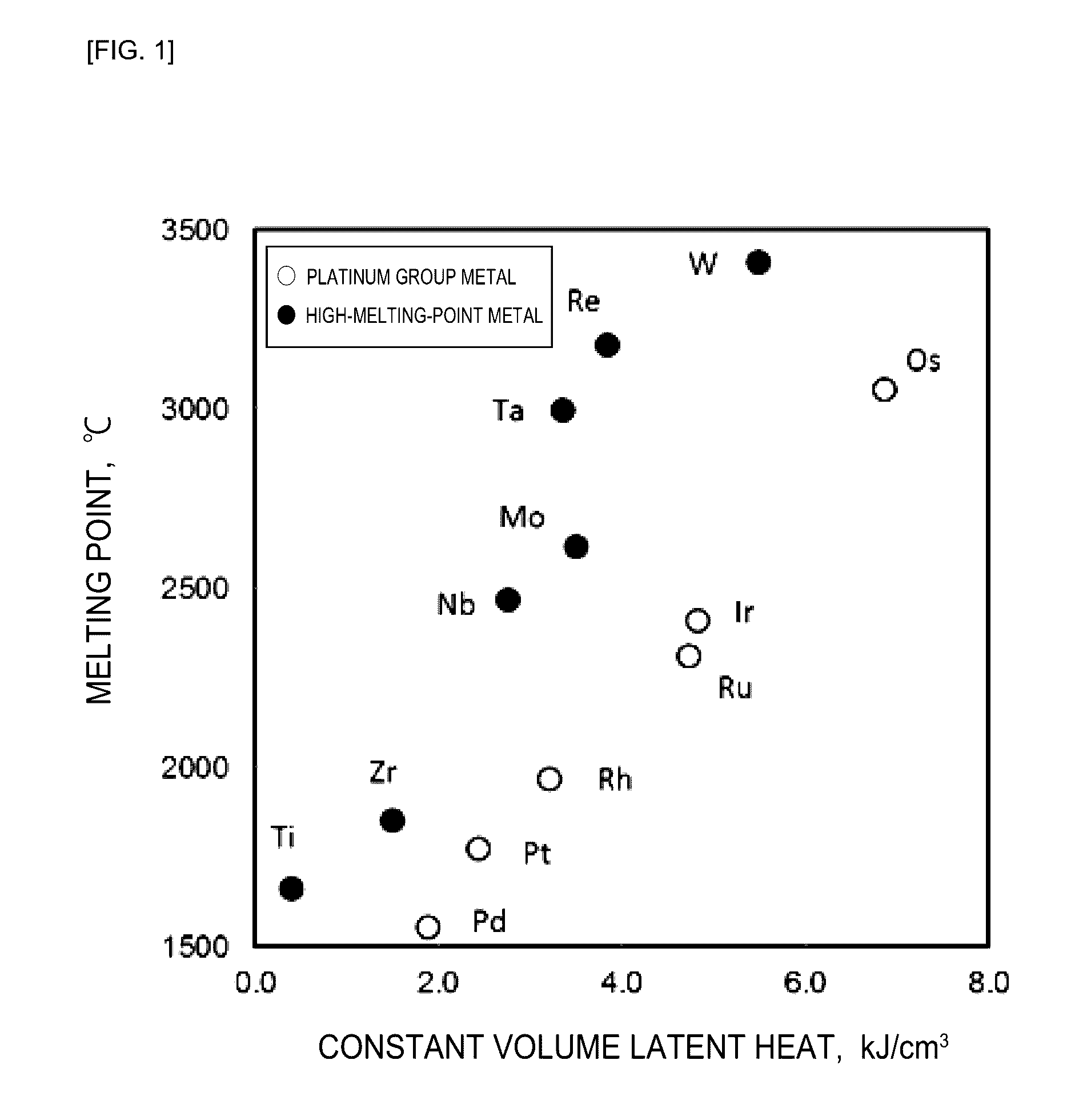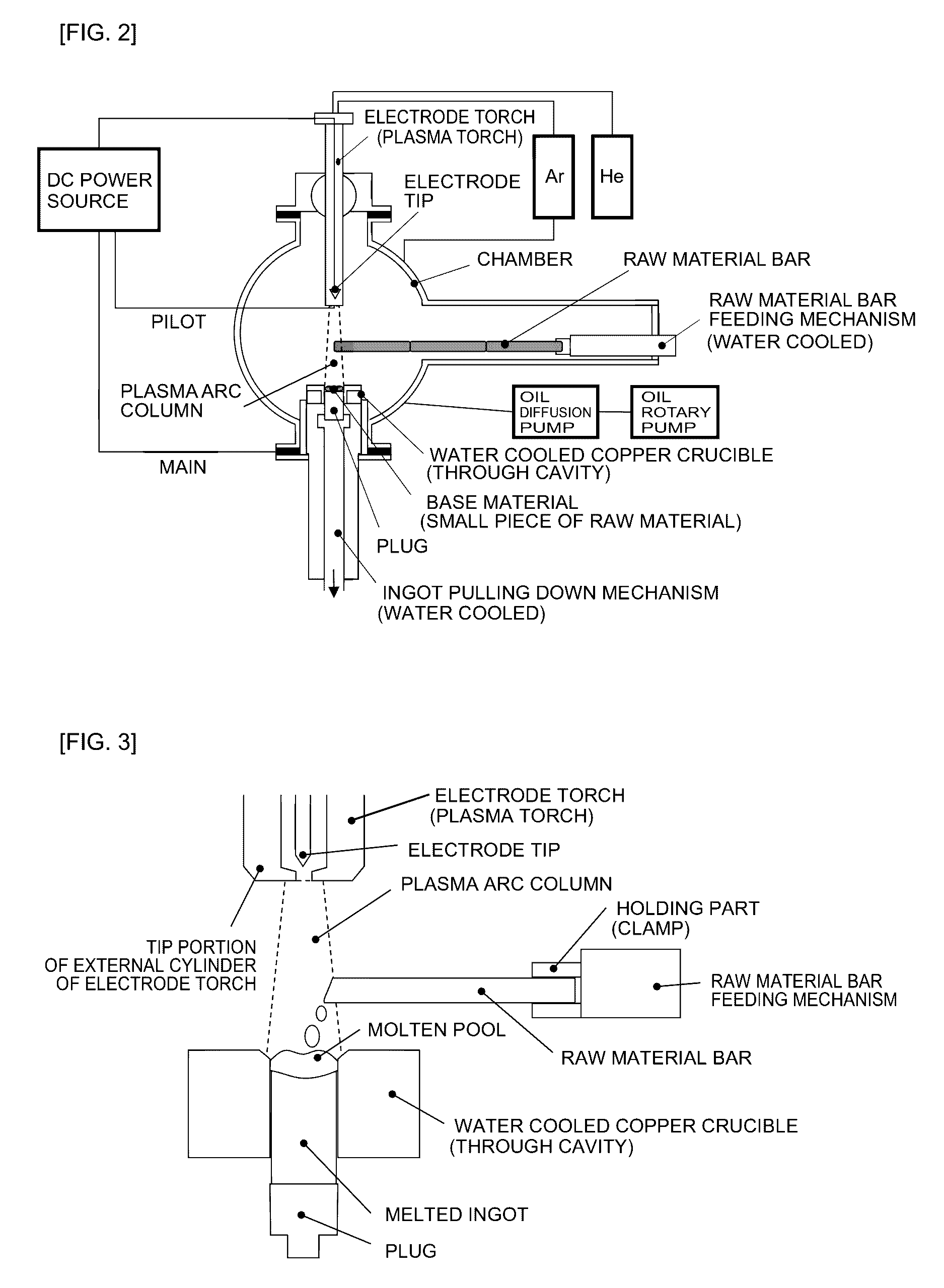Method for producing platinum group alloy
a platinum group and alloy technology, applied in the field of platinum groupbased alloy production, can solve the problems of low material yield, casting defects, and gradual wear of the discharge end of the w electrode in a long melting time, and achieve the effects of reducing material yield, increasing material yield, and reducing material yield
- Summary
- Abstract
- Description
- Claims
- Application Information
AI Technical Summary
Benefits of technology
Problems solved by technology
Method used
Image
Examples
examples
[0062]Further description is given using Examples. Experimental conditions in Examples and Comparative Examples are shown in Table 1, experimental results of Examples and Comparative Examples are shown in Table 2, and evaluation of the results is shown in Table 3.
TABLE 1Experimental conditions in Examples and Comparative ExamplesCavity dimensionsOutputComposition ofDiameter, Area S1, currentmelting raw materialNo.mmmm2Amass %BalanceExample 127.559480020NiPtExample 2307078505PtIrExample 33596281020Ir5NiPtExample 43596285010Rh1NiIrExample 5401,25785010PdPtExample 6501,96390020NiPtComparative254918205PtIrExample 1ComparativeNon-consumable electrode-20NiPtExample 2type arc melting methodComparativeInduction heating 10PdPtExample 3melting methodComparativeVacuum plasma 10RhIrExample 4melting method
TABLE 2Experimental results in Examples and Comparative ExamplesPullingMolten ingot Atmosphere indown dimensionschamberspeedDi-AreaPressure,Gasmm / ameter,S, LengthNo.atmL / minminmmmm2L, mmExample...
PUM
| Property | Measurement | Unit |
|---|---|---|
| Pressure | aaaaa | aaaaa |
| Pressure | aaaaa | aaaaa |
| Percent by mass | aaaaa | aaaaa |
Abstract
Description
Claims
Application Information
 Login to View More
Login to View More - R&D
- Intellectual Property
- Life Sciences
- Materials
- Tech Scout
- Unparalleled Data Quality
- Higher Quality Content
- 60% Fewer Hallucinations
Browse by: Latest US Patents, China's latest patents, Technical Efficacy Thesaurus, Application Domain, Technology Topic, Popular Technical Reports.
© 2025 PatSnap. All rights reserved.Legal|Privacy policy|Modern Slavery Act Transparency Statement|Sitemap|About US| Contact US: help@patsnap.com



